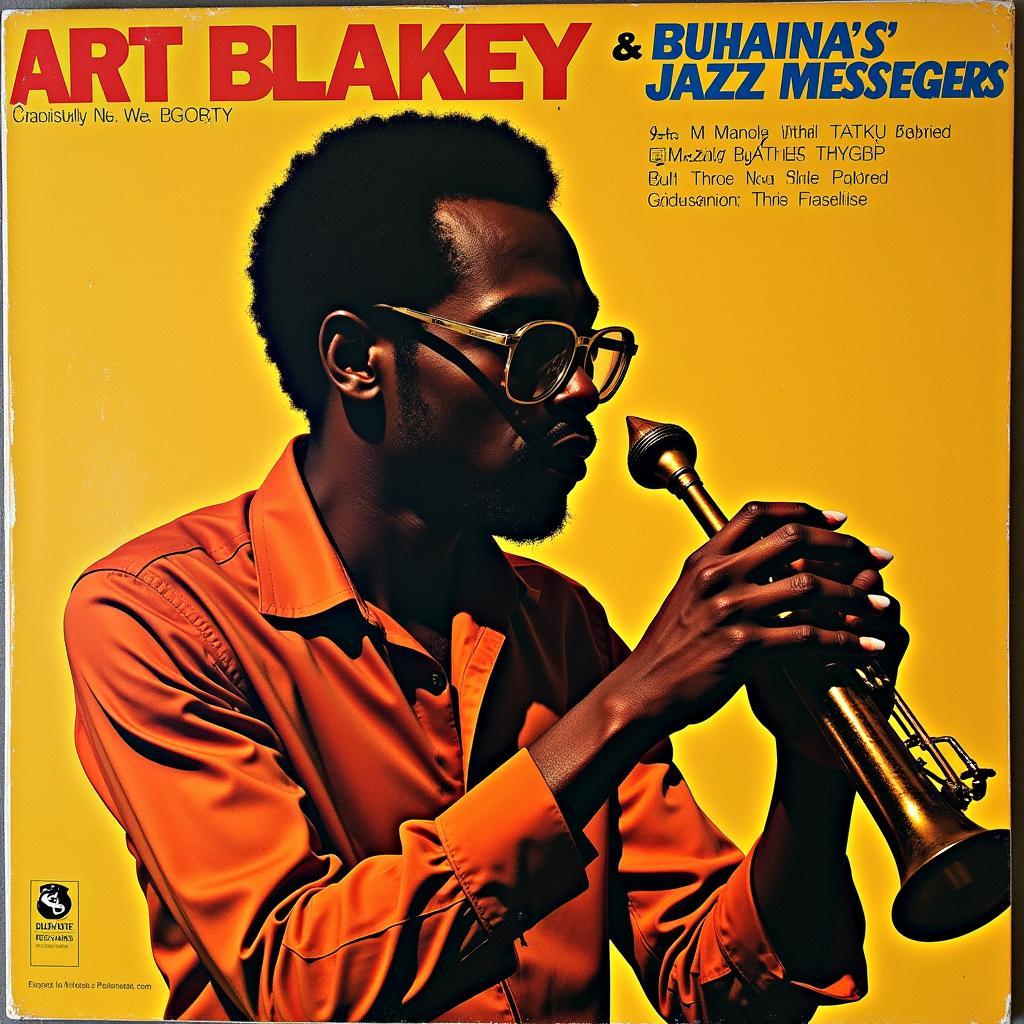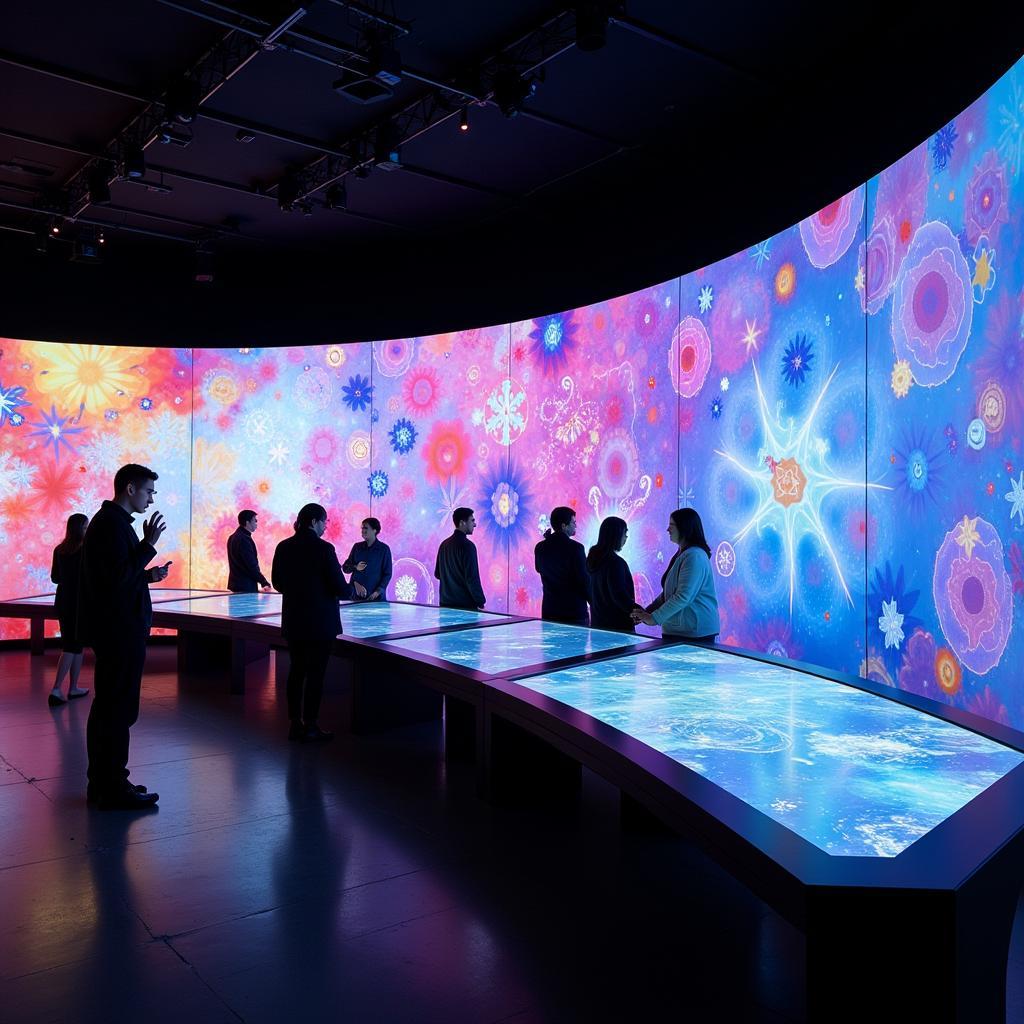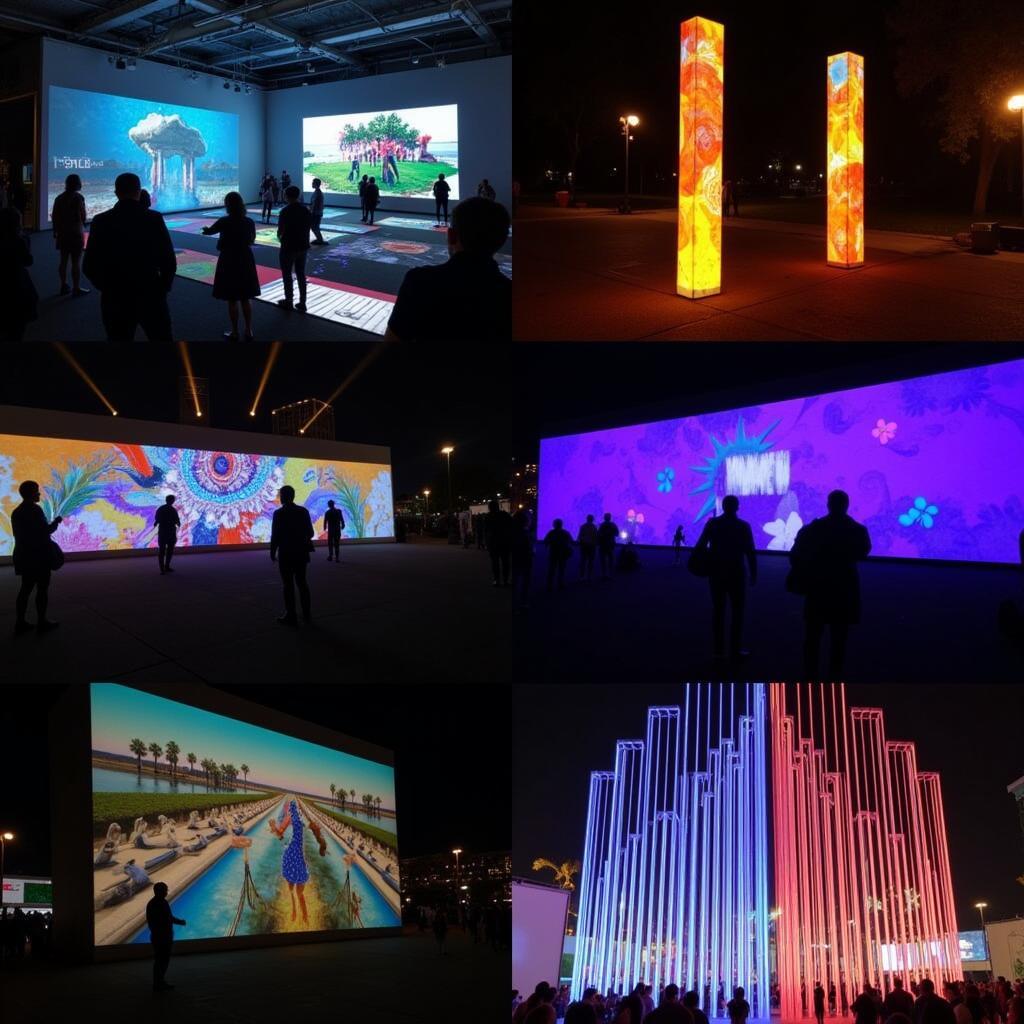Exploring the Vibrant Traditions of Folk Art Day of the Dead
Folk Art Day Of The Dead, or Día de los Muertos, is a captivating celebration of life and death, deeply rooted in Mexican heritage. This vibrant tradition, observed on November 1st and 2nd, honors deceased loved ones with colorful altars, sugar skulls, and joyous festivities. Unlike somber commemorations, Day of the Dead embraces the cycle of life and welcomes the spirits of the departed back to the world of the living.
A Fusion of Ancient Rituals and Modern Expression
The origins of Day of the Dead can be traced back thousands of years to ancient Mesoamerican cultures, particularly the Aztecs, who celebrated the goddess Mictecacihuatl, the Lady of the Dead. Over time, these indigenous traditions intertwined with Spanish Catholic beliefs brought over during colonization, resulting in the unique syncretism that characterizes the holiday today.
 The Colorful Folk Celebration
The Colorful Folk Celebration
The Significance of Altars and Offerings
Central to Day of the Dead celebrations are the ofrendas, or altars, meticulously crafted to welcome and honor returning spirits. These altars are adorned with offerings such as:
- Food and Drink: The favorite dishes and beverages of the deceased are offered to nourish their souls on their journey.
- Photos and Personal Belongings: Images and items that held special meaning to the departed are displayed to evoke their presence.
- Candles and Incense: The flickering light of candles guides spirits home, while the sweet aroma of incense purifies the space.
- Sugar Skulls and Pan de Muerto: These iconic treats, intricately decorated, symbolize the sweetness of life and the cycle of death and rebirth.
- Marigolds: The bright orange marigolds, known as the “flower of the dead,” are believed to guide spirits with their vibrant color and pungent scent.
The Iconic Symbolism of Sugar Skulls
Perhaps the most recognizable symbol of Day of the Dead is the calavera, or sugar skull. These whimsical creations, often adorned with colorful icing, sequins, and the name of the deceased written on the forehead, represent the departed soul. Contrary to their macabre appearance, sugar skulls are a celebration of life and a reminder of the ephemeral nature of our existence.
Beyond Borders: Day of the Dead’s Global Influence
In recent decades, Day of the Dead has transcended its cultural origins and gained international recognition. The holiday’s vibrant imagery, poignant themes, and celebration of life have resonated with people worldwide, inspiring artistic expressions, literary works, and even fashion trends.
FAQs About Folk Art Day of the Dead
1. When is Day of the Dead celebrated?
Day of the Dead is celebrated on November 1st and 2nd.
2. What is the purpose of the ofrenda?
The ofrenda is an altar created to welcome and honor the spirits of deceased loved ones.
3. What is the significance of marigolds?
Marigolds are believed to guide spirits home with their vibrant color and strong scent.
4. What do sugar skulls represent?
Sugar skulls represent the departed soul and serve as a reminder of the sweetness of life.
5. Is Day of the Dead a sad occasion?
While somber moments of remembrance are observed, Day of the Dead is ultimately a celebration of life and a joyous reunion with loved ones who have passed on.
Seeking Inspiration for Your Own Day of the Dead Creations?
For those seeking to explore the artistic traditions of Day of the Dead, numerous resources and workshops are available online and in local communities. These offer opportunities to learn about the cultural significance of the holiday and create your own vibrant expressions of remembrance.
“The beauty of Day of the Dead lies in its ability to transform grief into celebration, reminding us that life is a fleeting gift to be cherished.” – Dr. Maria Hernandez, Cultural Anthropologist
Whether you’re captivated by the intricate designs of sugar skulls or the heartfelt symbolism of the ofrenda, Folk Art Day of the Dead offers a rich tapestry of traditions to explore and appreciate. It’s a testament to the enduring power of human connection, even beyond the veil of death.
Need help navigating the world of online art? Contact us!
Phone: +84 24 6257 3573
Email: [email protected]
Address: Savico Megamall, 7-9 Nguyễn Văn Linh Street, Gia Thụy Ward, Long Biên District, Hanoi 10000, Vietnam.



